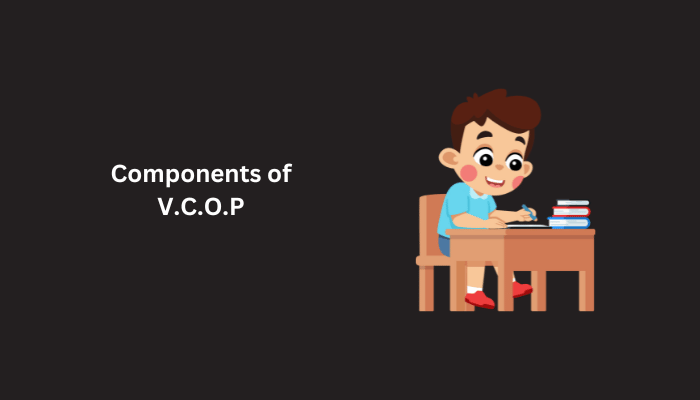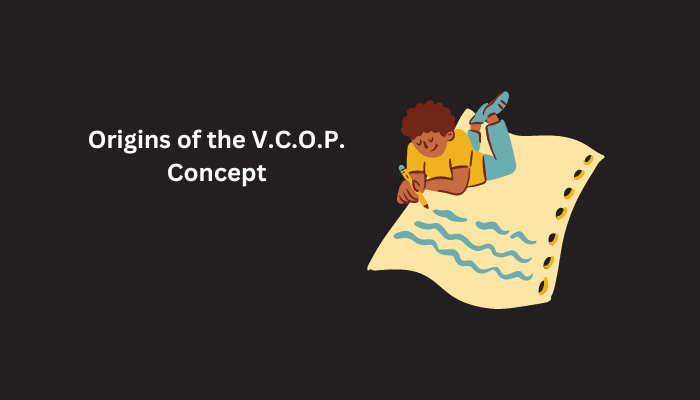What is the most memorable story you have ever read? And what is the reason that you remember it? Aren’t those stories you love the most, the ones that make you feel connected with them in some way or another?
Now the bigger question is how to introduce your young learners to the same skills that can develop further to make them the writers whose stories make people feel connected.
Writing is a powerful tool for communication, expression, and learning. It is best to introduce your students to this art early in life so they can master it over time. One of the most effective approaches in doing so that has gained prominence in educational settings is V.C.O.P. writing.
Let’s explore V.C.O.P. writing and how it can help you improve your students’ writing skills.
What are the Components of VCOP Writing?

V.C.O.P. stands for Vocabulary, Connectives, Openers, and Punctuation. Let's break down each component of vcop writing:
-
Vocabulary: A strong vocabulary is the foundation of excellent writing because it enables students to select the ideal words to clearly and vividly express their ideas.
-
Connectives: The words are the glue that connects the different parts of a text and lets the thoughts flow logically.
-
Openers: These are the words and phrases responsible for holding your readers, setting the tone, and making your writing more dynamic.
-
Punctuation: These are assigned symbols like commas and semicolons, that ensure clarity and prevent misinterpretation of the text.
Importance of VCOP Writing In Enhancing Abilities
Now that you know what V.C.O.P. are, the next question is why they are important. They transform ordinary writing into the extraordinary by simply focusing on four basic components. It helps students improve their ability to communicate themselves, hold the attention of readers, and organize their work more logically by concentrating on these four essential components.
This would also help students build their confidence as they learn to be more logical and expressive about their writing.
Now comes the question of how V.C.O.P. originated and adapted to the modern educational curriculum.
Recommended Article: Recommended Books For Primary School
Origins of the VCOP Writing

The V.C.O.P. concept is closely associated with Ros Wilson's Big Writing approach, developed in the UK, which emphasizes the importance of vocabulary, connectives, openers, and punctuation in improving children's writing skills.
Educators discovered that teaching these elements clearly enhanced students' writing. V.C.O.P. eventually made its way into classrooms all around the world.
Let’s deep dive into how these components can be leveraged in the classroom to enhance student writing and impact their achievements.
The Components of V.C.O.P.
Exploring the Role of Vocabulary in Writing
Vocabulary isn't just about big words; it's about precision. There are various ways in which you can expand your students’ vocabulary. Here are some techniques for doing so, using synonyms effectively, and choosing the right words for different genres.
-
Instead of just reading to the child, you should encourage them to read alongside you.
-
When you encounter Wow words (new words to the student, replacing simpler words considered too dull for their writing), you should pause and discuss them; why do they qualify as Wow words? How else can you use that word in a sentence? What is the simpler word that could be there?
-
When you use a word that your child is unfamiliar with, explain what it means and ask them to use it in their sentence.
-
Discuss how specific terms are employed in different contexts, such as formal and casual language.
-
Encourage them to check up vocabulary for possible synonyms; this will expose them to new words while also reinforcing the usage of a thesaurus.
The Importance of Connectives to Link Ideas
Connectives act as bridges between sentences and paragraphs. They help in developing complex sentence writing in students. Let’s dive into conjunctions, transitions, and how to create seamless connections in writing.
-
Create a word wall by writing down all the connective words that students can identify. Once the words are written, ask them to incorporate these words and merge sentences wherever they can.
-
While reading stories, make them highlight connective words with a highlighter and explain the sentences with and without those words so they understand the usage.
How Openers Enhance the Start of Sentences?
Openers are important to keep the readers engaged in any text. Nobody likes to read a long paragraph with every sentence starting with “And then…” Creative openers add flavor to our writing. From powerful statements to intriguing questions, let’s explore ways to captivate readers from the very beginning.
-
While this is quite a creative process and depends on how much creative writing your students are exposed to, you can begin by making them write simple sentences with creative openers and then move on to different formats.
Function of Punctuation in Clear Communication
Punctuation isn't just about following rules; it's about conveying meaning. We know well enough that correct punctuation can change the meaning of a sentence and even give disastrous meaning to it if used incorrectly. Let’s unravel the mysteries of commas, colons, and dashes.
-
Prepare sentences with the same words but different punctuation and explain the meaning of each sentence depending on the punctuation.
-
Make colorful cards with punctuation marks and ask students to pick a card that they think should be used in a sentence without punctuation. It can be used as an engaging and fun quiz with the students.
Integrating VCOP Writing into Teaching Practices
It is necessary to make V.C.O.P. a part of your regular teaching process and make it noticeable to students. Here are some ways in which you can do that during your lessons daily.
-
Create an Engaging Classroom Display for V.C.O.P. as visual aids make learning more memorable.
-
From vocabulary games to punctuation challenges, make strategies and plan activities for teaching each element of V.C.O.P.
-
Remember, educators play a significant role in implementing V.C.O.P. so keep adapting as per your students’ journey through the learning process.
-
Try to incorporate the same in homework so they can learn these components even when at home. You can also give some writing exercises as homework to ensure that their creative flow keeps running.
One thing to remember while planning your daily lessons with V.C.O.P., keep in mind that each task should be given a fair amount of time to discuss and set the expectations right. This will ensure that your students are aware of the assignments and know what they have to do.
Follow-Up Activities and Assessment
As important as it is to have brainstorming sessions before putting pen to paper, it is equally necessary to have follow-up activities. Here are a few ways in which you can engage your students and help them improve their skills after the assessment.
-
Conducting proofreading sessions with a focus on V.C.O.P.
-
Utilizing the student-friendly criterion scale for feedback.
-
Transitioning to teacher criterion scale for formal assessment and tests.
-
Organizing and conducting impromptu writing assessments to know how well the basics of V.C.O.P. have been internalized.
Conclusion
Implementing V.C.O.P. in school settings can result in a variety of benefits, including improved writing abilities, greater communication, and higher confidence.
While there are chances of facing challenges in adopting V.C.O.P. initially, the eventual outcomes are well worth it. We hope that by incorporating VCOP principles into your students' writing, you'll soon watch them become budding, confident communicators.





















